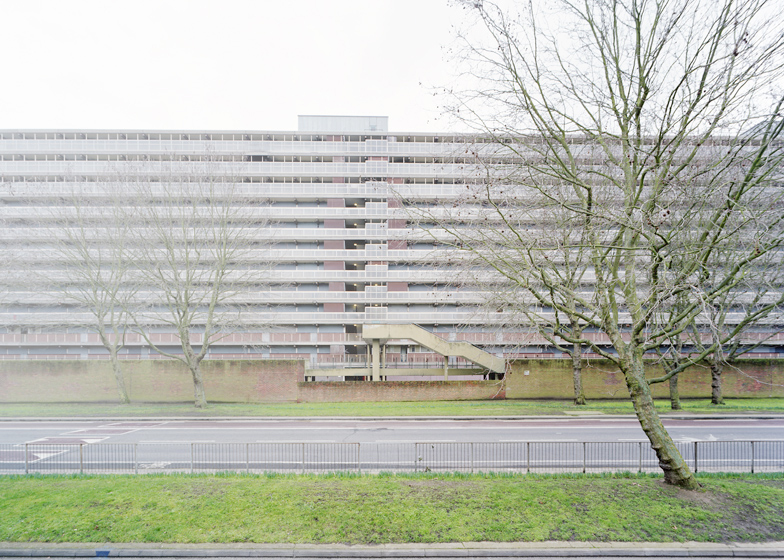UK prime minister David Cameron has revealed plans to bulldoze or overhaul 100 so-called "sink estates", blaming their design for fostering crime and poverty.
Cameron described the country's post-war social housing estates as "brutal" and a "gift to criminals and drug dealers" in an article published in the Sunday Times and on the government's website yesterday.
He pledged to spend £140 million to help "regenerate" or demolish 100 estates, which Cameron said had been designed in a way that created a poverty trap for those living in them.
"Step outside in the worst estates, and you're confronted by concrete slabs dropped from on high, brutal high-rise towers and dark alleyways that are a gift to criminals and drug dealers," wrote Cameron.
"The police often talk about the importance of designing out crime, but these estates actually designed it in. Decades of neglect have led to gangs, ghettos and anti-social behaviour," he added. "And poverty has become entrenched, because those who could afford to move have understandably done so."
Under Cameron's proposals, some existing social housing buildings and public spaces could be replaced by private housing developments.
"Existing estates were built at a lower density than many modern developments – poorly laid-out, with wasted open space that was neither park nor garden," said Cameron.
"So regeneration will work best in areas where land values are high, because new private homes, built attractively and at a higher density, will fund the regeneration of the rest of the estate."
Cameron's announcement came days after the government passed a controversial housing and planning bill that some believe will reduce the number of social housing units built across the UK. There are currently an estimated 1.4 million to 1.9 million families or individuals on the waiting list for social housing in the UK.
Cameron's plans for post-war estates divided UK architects and critics. Dezeen columnist and architecture critic Owen Hatherley described the prime minister's announcement as "infuriating" and "idiotic".
"The pitiful amount of money pledged is absurd to cover any more than mowing the lawn at '100 estates', but the worst aspect is its connection with the appalling housing bill, which will destroy the very concept of universal council housing," he told Dezeen.
"Ironically, one effect of that bill is that 'iconic' estates, which are usually Brutalist, will be precisely those which will go private quickest, as they will be classed as 'high value' and councils will be pressured to sell them," said Hatherley. "But Cameron's specific mention of Brutalism suggests, like much else, that his entire politics and worldview was formed in the 1980s and hasn't changed since."
But architect Glenn Howells, whose projects include the overhaul of the iconic 1960s Rotunda tower in central Birmingham to create 234 apartments, said Cameron's proposal had the potential to deliver wider benefits for the UK's towns and cities.
"Any investment in providing better quality housing reasonably swiftly is a welcome initiative," he told Dezeen. "If it's carried out in the right way, it could mesh and stitch into the wider context, so you end up with benefits spreading beyond the regeneration site into the surrounding area."
"You won't regenerate 100 estates for £140 million. [But] if you are priming the pump to consider how you might properly invest, that's the sort of funding you can consider," he added. "Public land can trigger private investment, but I think it needs to be carried out in a really integrated way."
The demolition of post-war estates has become one of the hottest issues in UK architecture. The Heygate Estate in south London, which housed more than 3000 people, was controversially demolished in 2014. Residents of the nearby Aylesbury Estate are now protesting against similar plans for their homes.
Last year campaigners failed in a last-ditch attempt to save the 1960s Robin Hood Gardens council estate in east London, which was designed by influential British architects Allison and Peter Smithson.
A revival of interest in the Brutalist style of architecture has saved other estates from a similar fate. In 2013 the first stage of a refurbishment project of the Park Hill estate in Sheffield was shortlisted for the Stirling Prize, the UK's highest award for architecture.
The Barbican in central London and the Erno Goldfinger-designed Trellick Tower in North Kensington have both become coveted addresses, with increasing numbers of residences becoming privately owned. Trellick's east London counterpart, the Balfron Tower, is also due to be turned into private housing this year after its council residents were decanted.

